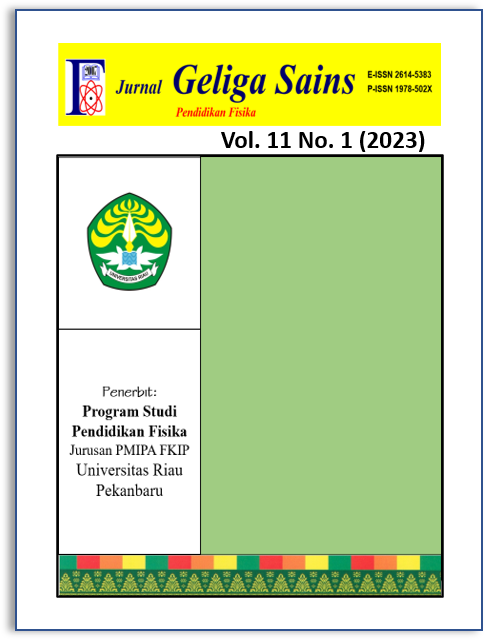Arduino-Based Pascal’s Law Teaching Props Design as Physics Learning Media
Keywords:
Teaching props, Pascal’s Law, learning mediaAbstract
This research was carried out to realize and support the availability of semi-digital teaching props as a suitable learning media to be implemented in physics learning on Pascal's Law material. The research design used is to adapt the ADDIE development model that focuses on the purpose of designing and knowing how the feasibility of the product that has been designed. The research subjects involved in this research were two media expert lecturers, two material expert lecturers, and nine students of the Physics Education University of Muhammadiyah Purworejo. The feasibility of teaching props is assessed from 3 aspects: laboratory trials, validity tests, and limited trials. Based on the results of research that has been done, obtained: 1) In laboratory testing, the Pascal's Law teaching props system obtained a very small error rate, namely on piston 1 (pressure 1) an average of 1.048% was obtained and on piston 2 (pressure 2) was obtained 0.219%, 2) In the product validity test, the average percentage of assessment by media expert lecturers is 79.514% belonging to the "adequate" category, and the average percentage of assessment by material expert lecturers is 83.333% belonging to the "very feasible" category, 3) In a limited trial, which shows the average percentage of student responses on aspects of benefits, presentation of tools, and physical appearance of 84% is classified in the "good" category. Thus, it can be concluded that the product that has been designed in the form of an Arduino-based Pascal's Law teaching prop is said to be feasible to be used as a medium in learning physics.




